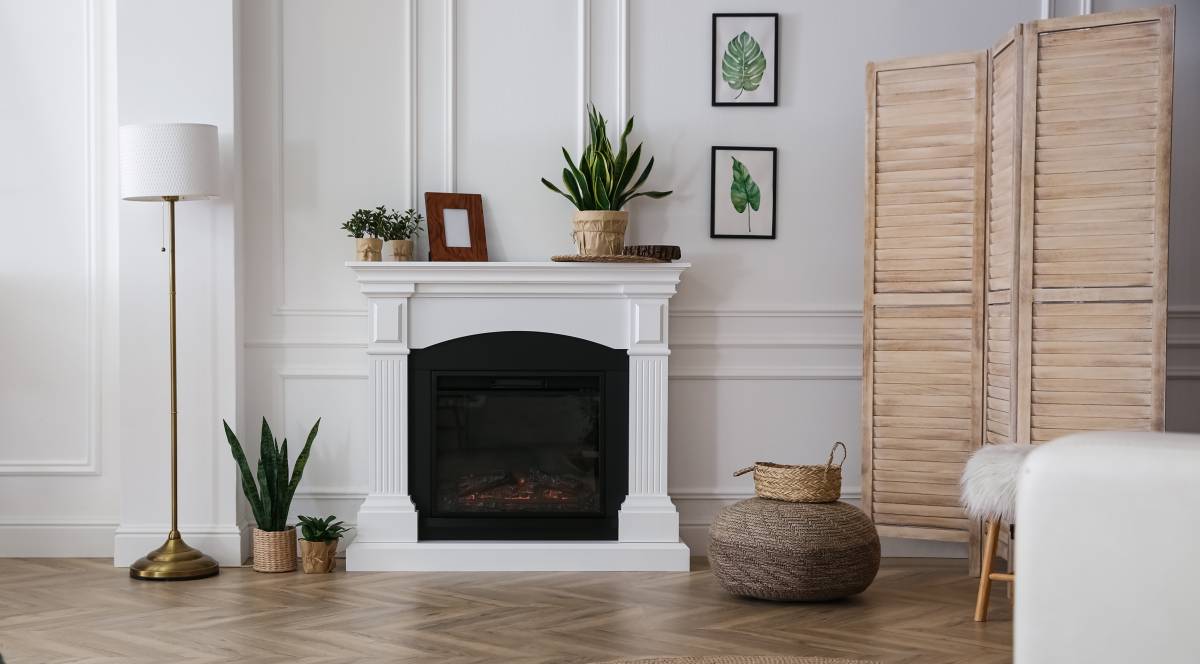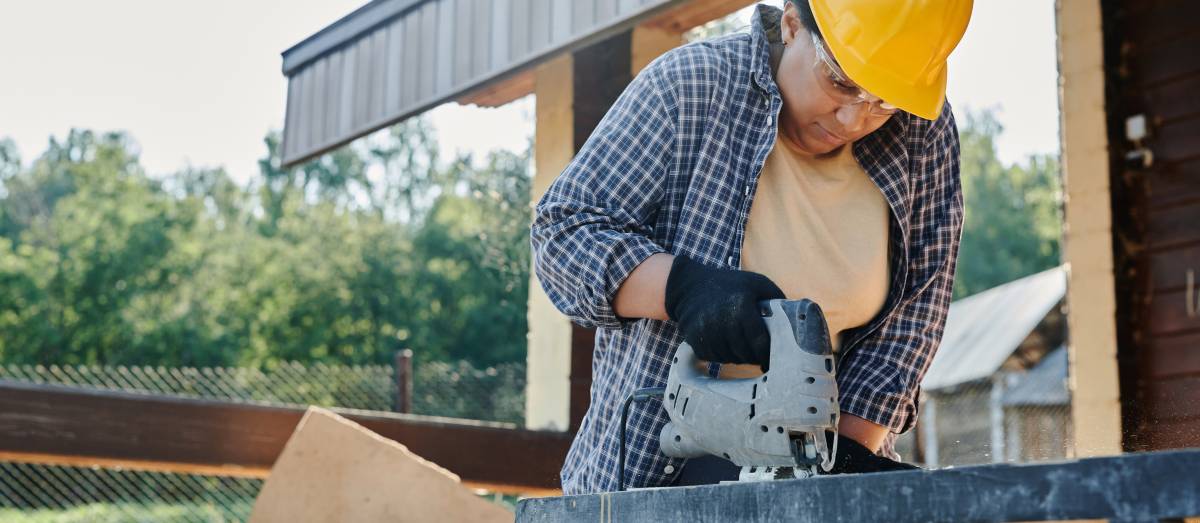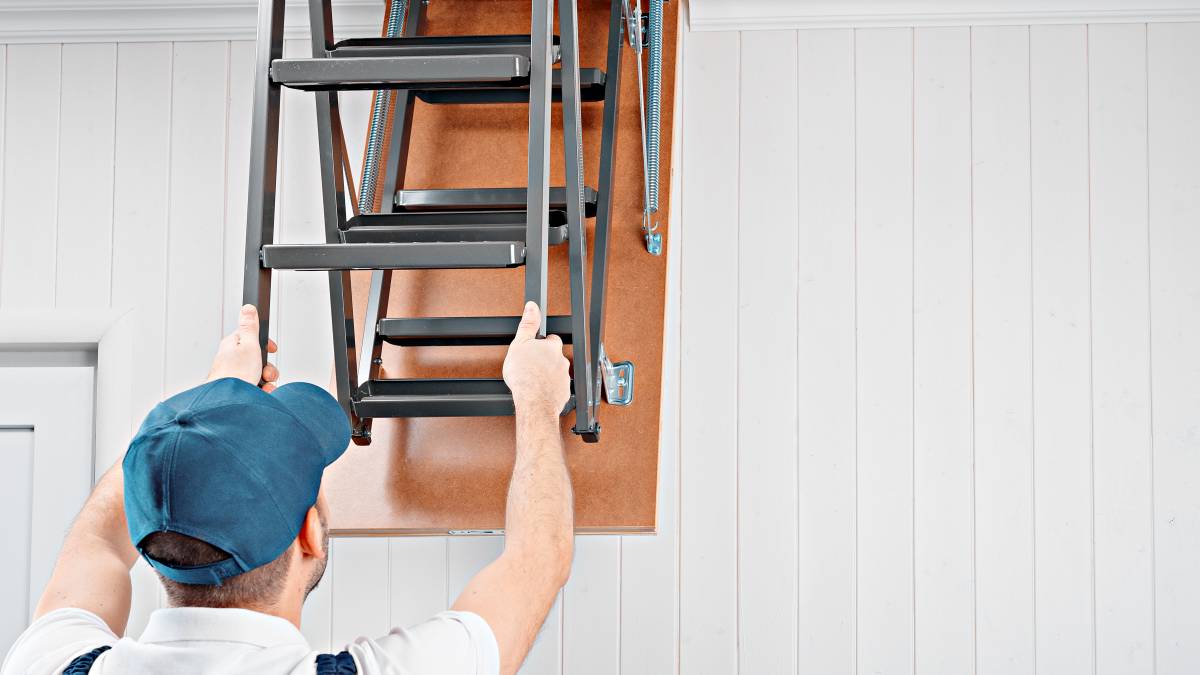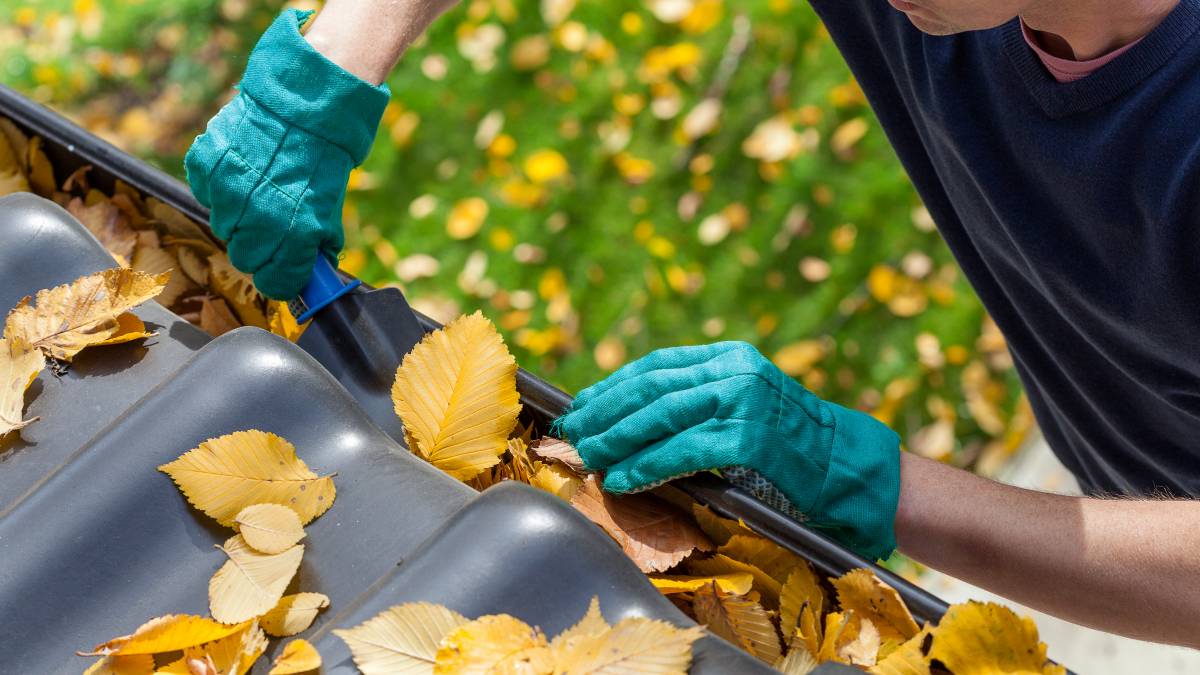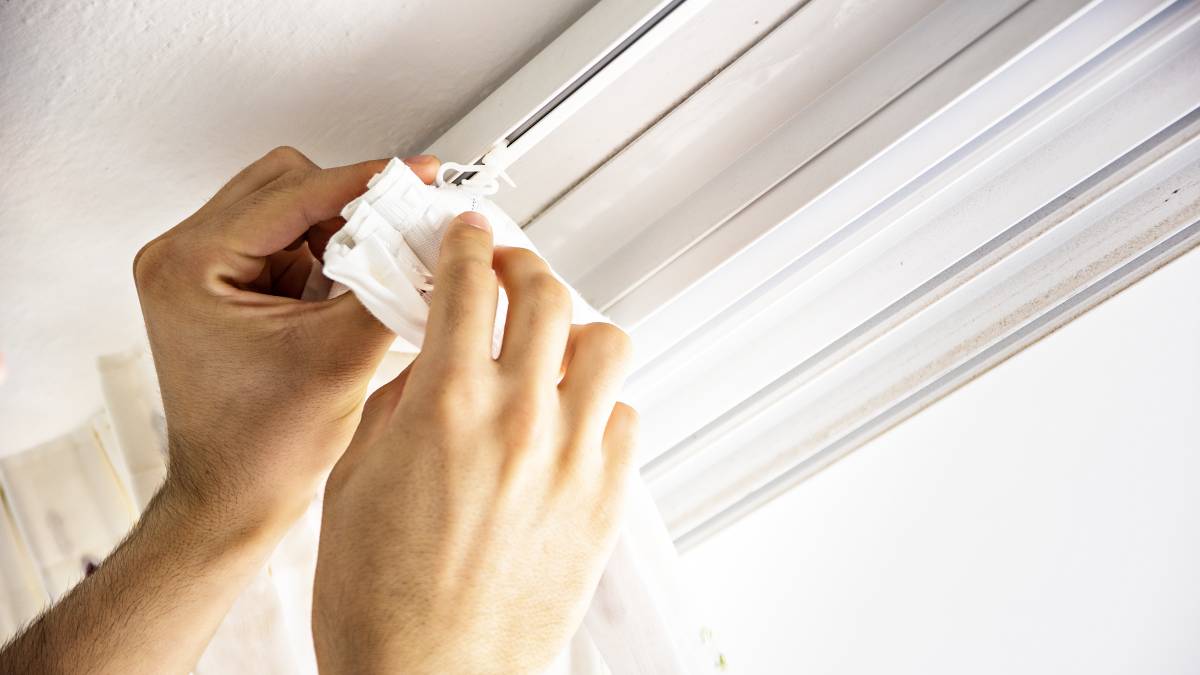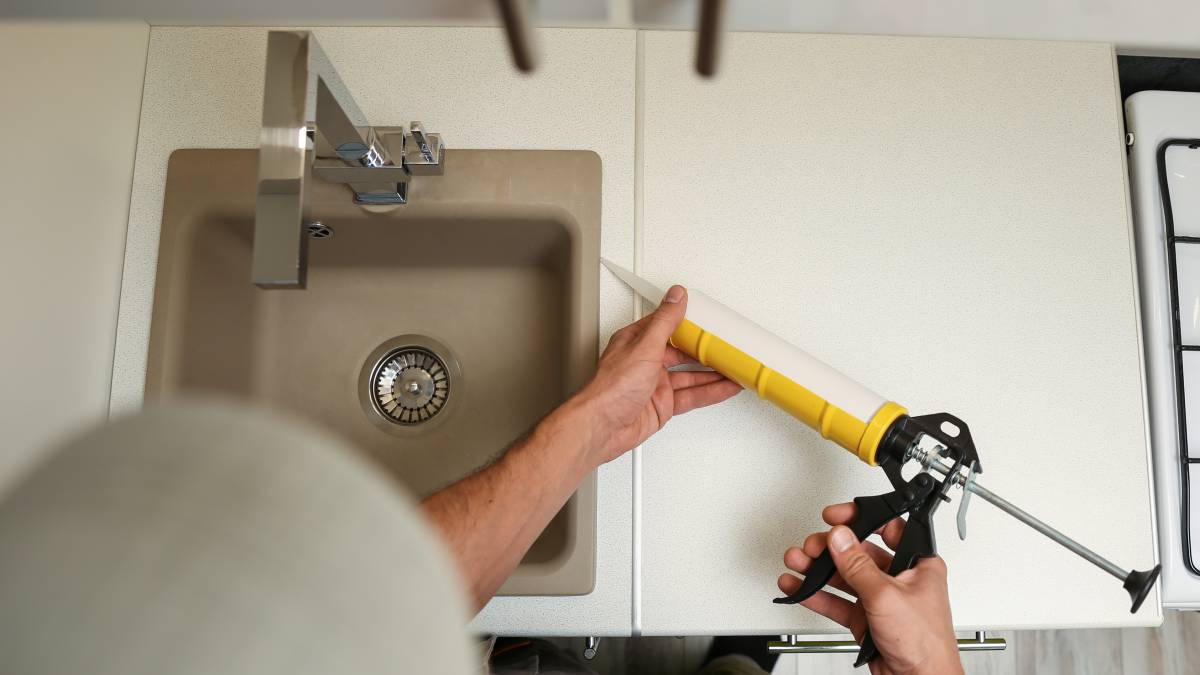- Home/
- Comparisons/
- Handyman/
- Nail Gun vs Staple Gun

Nail gun vs staple gun: Which is the right tool to use?
Comparing nail guns and staple guns based on fastening strength, depth control, safety of use, and more.
Hire a handypersonLast Updated on
Key Facts
- Nail guns are power tools designed for driving nails into wood or other materials.
- Staple guns are devices used for driving metal staples into various materials for fastening purposes.
Ever found yourself stuck in the dilemma of choosing between a nail gun vs staple gun? We’ve all been there, tired of hammering away, only to end up with sore fingers and less-than-perfect results. Whether you’re taking on a major home improvement project or just some weekend DIY, picking the right tool can make all the difference.
This guide will dive into the strengths and ideal uses for each. Both can transform your projects from tedious tasks to enjoyable and efficient experiences. However, there’s always a better fastening tool for certain uses. No worries, we’ll help you choose.
What are nail guns?
Nail guns, or nailers, are power tools designed to drive nails into various materials like wood, shingles, and even concrete. They streamline the process of fastening materials and make your construction or DIY projects more efficient.
But how does a nail gun work? Most nail guns use a combination of air pressure, combustion, or electricity to push nails out at high speed. When you press the tip against your work surface and pull the trigger, the nail gun does the heavy lifting to drive the nail in.
They’re particularly handy for large-scale woodworking projects like building a deck, installing trim, or framing a house. Given their power and precision, they’re a must-have for professional contractors and avid DIYers alike.
Just remember, safety first: always wear protective gear and follow the manufacturer’s guidelines to ensure you’re using the tool correctly.
What are staple guns?
Staple guns are versatile tools designed to drive heavy-duty staples into materials like wood, plastic, and fabric. They’re perfect for jobs where nails just won’t cut it, like upholstery, carpeting, and insulation work.
Most of them operate with a spring mechanism, but when you’re tackling tougher materials, an electric staple gun might be what you need. They use power to drive staples more forcefully, and they’re ideal for big projects where squeezing a manual staple gun would wear you out.
Whether you’re reupholstering that old chair in the living room or securing house wrap on a new build, staple guns are incredibly handy. And don’t worry, using one isn’t rocket science. Just load the staples, press the tip against your work surface, and squeeze the trigger or handle.
Staple gun vs nail gun: How do they differ?
If there’s one thing we’ve settled, it’s that choosing between a nail and staple gun can sometimes be frustrating. This section will dive into the factors that set these tools apart to help you out. From the types of projects they’re best suited for to how they handle different materials, we’ve got you covered.
In terms of fastening strength
Nail guns and staple guns vary significantly in terms of how strong they can fasten things up. Nail guns drive nails deep into wood and other hard materials. In contrast, staple guns are better for lighter materials like fabric and thin wood, where too much force can cause damage.
You’ll find nail guns more reliable for heavy-duty projects where structural integrity is key, such as framing and construction work. Staples, shot from a wall stapler, offer a shallower and wider grip. This helps them secure softer materials without tearing them apart.
In terms of depth control

Nail guns often feature adjustable depth settings to allow precise control of how deep each nail is driven into the material. You won’t have to worry about accidentally driving a nail too deep and damaging your project.
Staple guns, on the other hand, typically offer less depth control. However, they’re designed for materials that don’t need deep fastening. Just make sure to use the right size staples for the job, and you’ll get optimal results every time.
TIP: Other tools to consider when depth is of utmost importance are brad and finish nailers. Brad nailers offer finer, more exact depth control for delicate trim work. Meanwhile, finish nailers provide sturdier fastening for more substantial woodwork. Depending on your project’s requirements, either tool could come in handy.
In terms of safety
Nail guns and staple guns each have unique risks that demand attention. Nail guns, given their power and force, can cause severe injuries if misused. On the flip side, staple guns might seem less dangerous, but improper handling can still lead to accidents.
You should always wear safety goggles to protect your eyes from stray projectiles and debris when working with these tools. Plus, make sure your work area is well-lit and clutter-free to prevent tripping or mishandling either tool. Familiarising yourself with the tool’s manual is also a must.
Nail guns typically have safety features like trigger locks, but you must stay vigilant about ensuring the tool doesn’t fire unexpectedly. Misfires and ricochets are common with both manual and electric nail guns, so it’s crucial to maintain a stable stance and grip. Keeping your body parts away from the line of fire is also crucial.
Proper training and understanding of how to use a staple gun safely are equally important, even if they are usually perceived as less hazardous. Staple guns often have shorter noses, which can lead to accidental contact with skin or body parts if not handled properly.
Whether you’re using a nail gun or a staple gun, regular maintenance checks can prevent malfunctions and improve safety. If you’re unsure how to use them properly, it’s best to leave your DIY project to a professional handyperson.
In terms of project type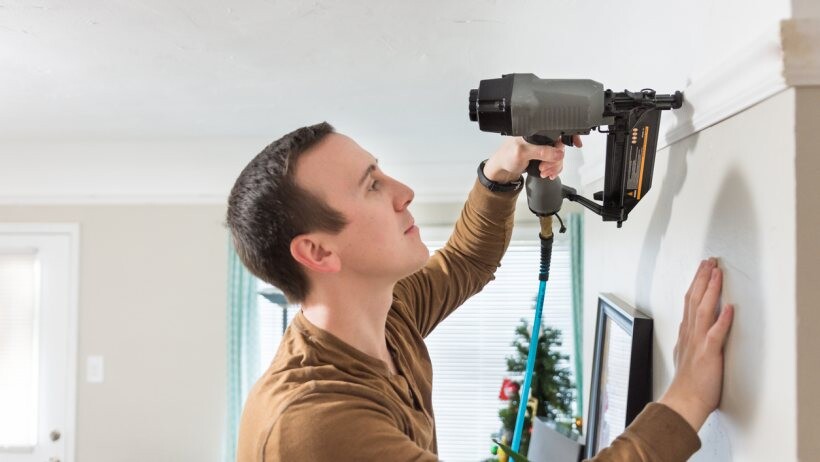
Ask any DIY enthusiast, and they’ll tell you that knowing what staple guns are used for and where nail guns are perfect can save a lot of headaches. Nail guns and staple guns each have their niche based on what you’re working on.
For fencing projects, a nail gun can be a game-changer because it quickly drives nails into sturdy wood. It can also guarantee a strong structure, so you’d be hard-pressed to find a more efficient tool. Conversely, if you’re assembling an outdoor cat house, a furniture staple gun might serve better since it allows for precise joins and minimises the risk of splitting thin wood panels.
When it comes to furniture assembly, though, choosing the right tool makes a world of difference. A stapler for upholstery works wonders for securing fabric to furniture frames because it gives you a tight and professional finish. However, for joining wooden parts, a nail gun provides the strength needed for lasting durability, which makes it a better option for structural elements.
Yet, if you’re tackling heavy-duty items or substantial builds, you can always opt to hire furniture assemblers. For just £20 to £60, they can come in and do the job for you. No need for bulky tools or back-breaking labour.
In terms of ease of use
When it comes to large-scale projects, nail guns offer a straightforward and effortless experience. You’ll appreciate how quickly and easily they sink nails into even the toughest wood. This efficiency can significantly speed up your project timeline.
Staple guns, on the other hand, bring a different kind of convenience. They’re lighter and easier to manoeuvre, which makes them perfect for those finer, more detailed jobs. Since they’re typically smaller, you’ll find them less intimidating to handle for precision tasks.
Both tools have their strengths, but their usability can vary depending on the task. If you’re assembling something with many parts, a staple gun’s precision can save you a lot of hassle. For projects demanding quick and strong joins, the nail gun simplifies the process immensely.
Consider the ergonomics of these tools as well. A nail gun with a good grip and balanced weight reduces fatigue during extended use. Meanwhile, a well-designed staple gun provides comfort in prolonged, detail-oriented work.
In terms of cost

Nail guns can range from very affordable to professional-grade, depending on their features and intended use. Entry-level models cost between £20 and £80, making them accessible for DIY enthusiasts and light-duty work. However, professional-grade nail guns can set you back £250 or more.
On the other hand, you can find manual staple guns for as little as £5 to £20. For more demanding tasks, expect to spend over £50 on high-end, electric or pneumatic models, which offer greater power and efficiency.
When comparing the two, nail guns often come at a higher price point due to their specialised use and robust build. Cost can also be influenced by the power source. Cordless nail guns are more expensive because of their portability and convenience. Similarly, a battery-operated staple gun is priced significantly higher due to the added power option and ease of use.
Save time and effort on your home improvement projects with Airtasker
Choosing between a nail gun and a staple gun depends on your project’s specific needs and budget. But sometimes, even with the right tools, tackling these projects on your own can be daunting. That’s where the Airtasker platform comes in.
By posting a task on the site, you can easily connect with an experienced handyperson who can help with everything from assembly to disassembly and more. It doesn’t matter if you’re working on your fence or setting up furniture.
There are experts who can handle the heavy lifting so you can enjoy a stress-free experience. Post a task today and connect with skilled Taskers who are ready to bring your project to life!
Nail gun vs staple gun
| Nail Gun | Staple Gun | |
Fastening Strength |
Provides strong fastening for heavy-duty projects |
Suitable for lightweight materials like fabric and thin wood |
| Depth Control |
Offers adjustable depth settings for precise control |
Typically less depth control; designed for shallower fastening |
| Safety |
Higher risk; requires strict safety measures and protective gear |
Lower risk but still requires proper handling and protection |
| Project Type |
Ideal for large-scale projects like wood framing and construction |
Best for precise and delicate work like upholstery and carpeting |
| Ease of Use |
Quick and efficient for driving nails into tough materials |
Lightweight and easier to manoeuvre for detailed tasks |
| Cost |
Generally more expensive because they have more specialised uses |
More affordable due to limited applications and simple build |
FAQs on nail guns and staple guns
Nail guns provide quick and efficient fastening so they can save time and effort on large projects. They also ensure consistent and precise nail placement.
Your electric staple gun may keep jamming due to using incorrect or damaged staples or a lack of regular maintenance. Consider seeking a tool repair service for a thorough inspection and fix.
No, a brad nailer is designed to shoot small nails, while a staple gun is used to drive staples into materials.
Find handyman, fast
Post a task
Related articles

Install a screen door in 6 steps
Read more

How much can you earn as a handyperson?
Read more

How to Soundproof a Room
Read more
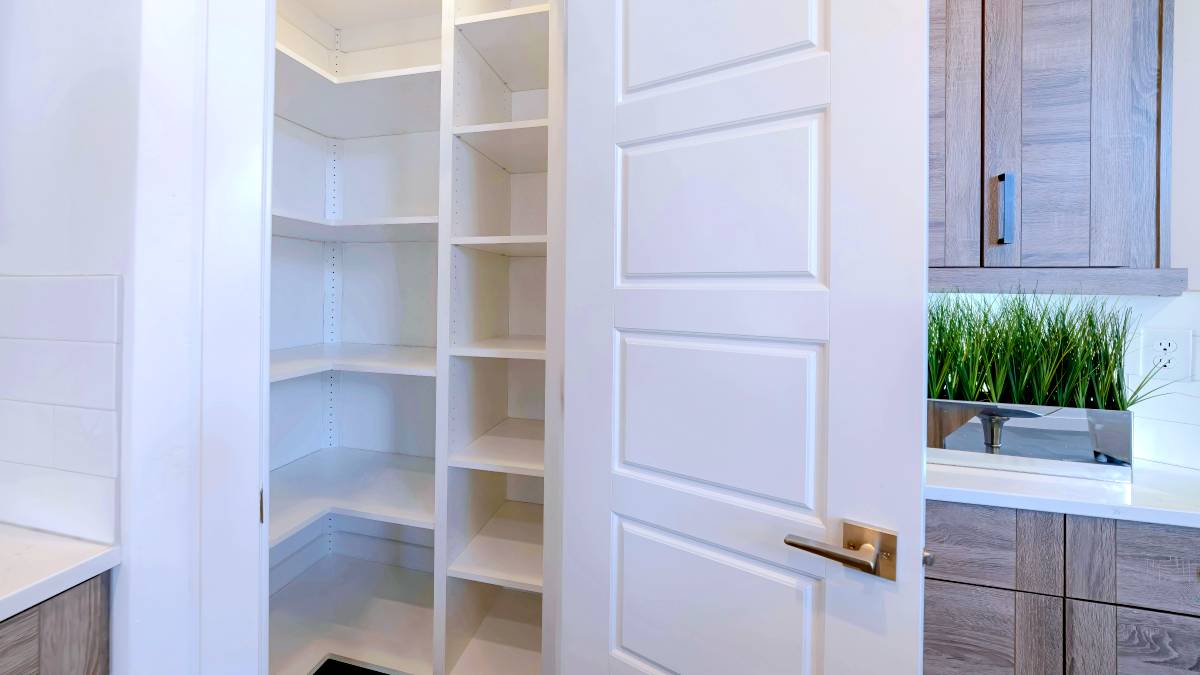
30 Lovely pantry door ideas
Read more

How to fox proof your chicken coop
Read more

How to install curtain rods
Read more

Best blue-collar jobs on Airtasker
Read more

Learn how to cut a mirror in 7 steps
Read more
Related price pages

What are average handyman prices?
Read more

How much does treadmill repair cost?
Read more

How much does clock repair cost?
Read more

How much does hot tub repair cost?
Read more

How much does signage cost?
Read more

How much does awning repair cost?
Read more

How much does window repair cost?
Read more

How much do chainsaw services cost?
Read more
































